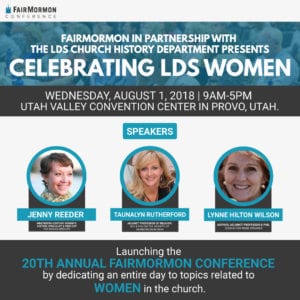“For too long Mormon women’s voices have been ignored. We, as a people, have suffered because of it.” Elder Steven E. Snow, Church Historian, June 2017 MHA Conference (Hat Tip Juvenile Instructor)
Inspired by my calling as a ward self-reliance specialist, I have started collecting stories about other educational initiatives undertaken in Latter-day Saint history. A story that highlights the contribution of a Mormon woman seem especially apropos in light of the upcoming celebration of Mormon Women’s history:
This story comes from Casey Griffiths’s article “A Century of Seminary” who writes:
Many complex historical forces led to the creation of the seminary program. But in the simplest sense, the program began in the inauspicious setting of a family home evening. Joseph F. Merrill, a newly called member of the Granite Utah Stake presidency, sat listening to his wife, Annie, tell stories from the Bible and the Book of Mormon to their children before they went to bed. “Her list of these stories were so long that her husband often marveled at their number, and frequently sat as spellbound as were the children as she skillfully related them.” When Brother Merrill later asked his wife where she had learned all of the stories, she replied that she had learned most of them in a theology class conducted by Brother James E. Talmage at the Salt Lake Academy, a Church-owned school she had attended as a young girl. Deeply moved by his wife’s effectiveness as a teacher, Brother Merrill immediately began contemplating how other children attending public schools could receive the same kind of spiritual training as his wife. He became obsessed with the idea of providing students with a religious experience as part of the school day, regardless of what kind of school they attended. A few weeks later he presented the rough idea for a new religious education program to the stake presidency.
Of course, while this simple experience captures some of the revelatory forces leading to the creation of seminary, it must be acknowledged that the seminary program was not created in a vacuum.
While some might think that protest and public shaming are the most effective way to change the world or even the Church, this example captures the importance of personal inspiration and innovation in the home. President Nelson once stated that “The home is the laboratory of love and in it resides the most important unit of the Church and of society—the family ” I like how Annie Merrill demonstrated that teenagers could be taught by adapting the best church scholarship of the day in an engaging manner. I am grateful that her stake leaders were able to see the merits of generalizing her success across a larger setting. I give major props the Seminary program for continuing this tradition and being so quick to integrate the Gospel Topics Essays into the curriculum and training instructors how to find the best resources to answer questions.
Further Reading Links:
Register for Women’s Day at FairMormon Conference
Help Doubting Students Choose to “Be Believing,” Elder Renlund Tells Seminary and Institute Teachers (June 2018)
Answering Difficult Questions with Supplemental Resources, Chad H. Webb (July 2017)
The Opportunities and Responsibilities of CES Teachers in the 21st Century, Elder M. Russell Ballard (Feb. 2016)
The post Great Initiatives in Church History: Seminary appeared first on FairMormon.
Continue reading at the original source →




